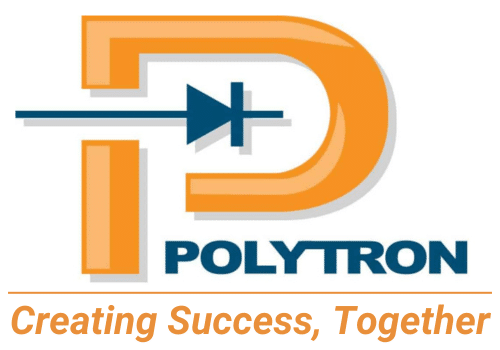A global beverage manufacturer has been producing nutritious beverages for customers for over 70 years.
The company’s innovative spirit has driven it to develop many processes through the years to ensure its place as an industry leader in research and development, process efficiency, and product quality.
Challenge |
Solution |
Results |
| Deploy a parallel network
Upgrade aging network infrastructure |
Category 6 copper cable
Singlemode armored fiber optic cable DIN rail mounted patch panels Industrial Distribution Frame (IDF) Cable management |
Secure, sustainable, and scalable network performance
Decreased network downtime Reduced installation risk |
The Project
 Challenges
Challenges
To accommodate its continuous growth, address costly downtime and the steady rise of operational expenses (OpEx), a leading global beverage manufacturer decided to upgrade its network infrastructure.
The communication network was causing unplanned production losses and frustrating operations leadership in the process. Network convergence timing issues occurring between equipment controllers were the cause of these losses. This “invisible” issue was creating much frustration as workers tried to troubleshoot the resulting production downtime.
To maintain its global competitiveness and leverage its product innovation capabilities, the company needed to upgrade the existing network, which was over 15 years old. Even though new data requirements for plant reporting were introduced, the aging infrastructure (comprised of various protocols and Ethernet) had not been improved to keep pace with the manufacturer’s evolving needs.
Upgrading the old network infrastructure would allow the company to maintain a competitive advantage and meet customer demands by increasing network uptime and availability while keeping its valuable equipment up and running. Implementing these improvements would deliver a secure, reliable, and future-ready network.
The beverage manufacturer was running a 24-hour operation, therefore, shutting down production to rewire some communications cable was not an option. As part of the overhaul, the customer needed a parallel installation to allow the project team to reduce installation risk, continue with day-to-day operations, and have a smooth migration cut-over.
Finally, the project needed to flow seamlessly with minimal disruptions to several different plant operations.
Panduit and Polytron Solution
Since there was no in-house expertise available to upgrade the network, the manufacturer engaged Polytron to assess its existing network architecture and design an updated version that focused on improving overall bandwidth usage and efficiency across all manufacturing areas. A Panduit OneSM Partner, Polytron had a solid relationship with the company and a 25-year relationship with the project installer, Oreair Electric, a Panduit OneSM Certified Silver Partner.
To resolve the current network architecture challenges, Polytron conducted a network audit using diagnostics, created a design plan, and an implementation schedule. Once the assessment was completed, Polytron engaged Panduit to join the project, providing its infrastructure expertise. Polytron served as the main contractor and provided overall project management while Rexel provided technical assistance as the distributor.
Design
During the assessment, Polytron determined that the network upgrade would include a change from the original Mesh Topology to a Star Topology. The new topology plan was to use Cisco switches along with Panduit fiber and copper solutions to provide a more reliable and flexible solution.
The complete Panduit solution included a new cabling system that would support the updated topology and bandwidth requirements. It also consisted of fiber optic and copper connectivity, the Pre-Configured Industrial Distribution Frame (IDF), the Industrial Data Center (IDC), patch panels, DIN Rail mounted patch panels, and cable management.
To ensure proper alignment, the Polytron team reviewed the design plan with the manufacturer’s stakeholders. Alignment with all stakeholder groups was crucial since the project touched every area of the plant. Therefore, support was needed from IT, all department managers, plant engineering, and control support technicians. The project needed to be invisible to plant operations with minimal disruptions. To accomplish this, the installation and network migration schedules had to be constantly adjusted to the plant’s schedule.
Implementation
Oreair Electric installed all new singlemode armored fiber optic cable and Category 6 copper cable to replace the existing fiber optics cabling and Ethernet copper cabling in parallel to the existing network. This reduced migration risk from dated medium and also reduced installation risk, allowing a continuity in day-to-day operations with a seamless migration cut-over. In a project such as this, the installation was approximately 60% of the total project cost.
IDFs were used on the plant floor for quick deployment and protection of the customer’s Ethernet switches. These switches serve as the network distribution layer and a fiber aggregation area, which reduced the quantity of fiber optic cable needed. The IDFs also protect the Cisco switches as part of the network core.
Tested and thermally verified by Panduit Laboratories, the IDF achieves 25% faster installation than a non-pre-configured IDF installation. The additional back-end space allows for 3X the cooling capacity over typical deployments for increased reliability.
To accommodate its standardization requirements, Polytron based the design for the new infrastructure on Converged Plantwide Ethernet (CPwE) best practices and guidelines. Using equipment from Panduit, Cisco, and Rockwell Automation, the CPwE architecture provides standard network services to the applications, devices, and equipment in modern Industrial Automation and Control Systems (IACS) applications and integrates them into the wider enterprise network. It also helps customers achieve the real-time communication and deterministic requirements of the IACS, as well as the reliability and resiliency required by those systems.
Solution: Bring on a Knowledgeable Partner
The updated network now provides the desired performance results and delivers a system that is secure, sustainable, and scalable – eliminating network-related production downtime issues. It also increased the plant’s networking support structure and ease of maintenance while introducing new technologies that can be used in future plant projects. According to operations leadership, “the successful results further emphasize the need for upfront planning and excellent execution. The switchovers occurred seamlessly without any interruption to production.”
The Polytron team trained the appropriate operations support groups, following its proven Roadmap to Network Solutions for the process. As one area was validated and running smoothly, hands-on training and handoff were conducted before moving onto the next area.
Through the efforts of Polytron, Oreair Electric, Rexel, and Panduit, the new, high-performance copper and fiber system fulfills the customer’s requirements for enterprise and industrial networking standards. The company now has a reliable, expandable, and robust infrastructure that maximizes the benefits of plant-to-business network convergence.




